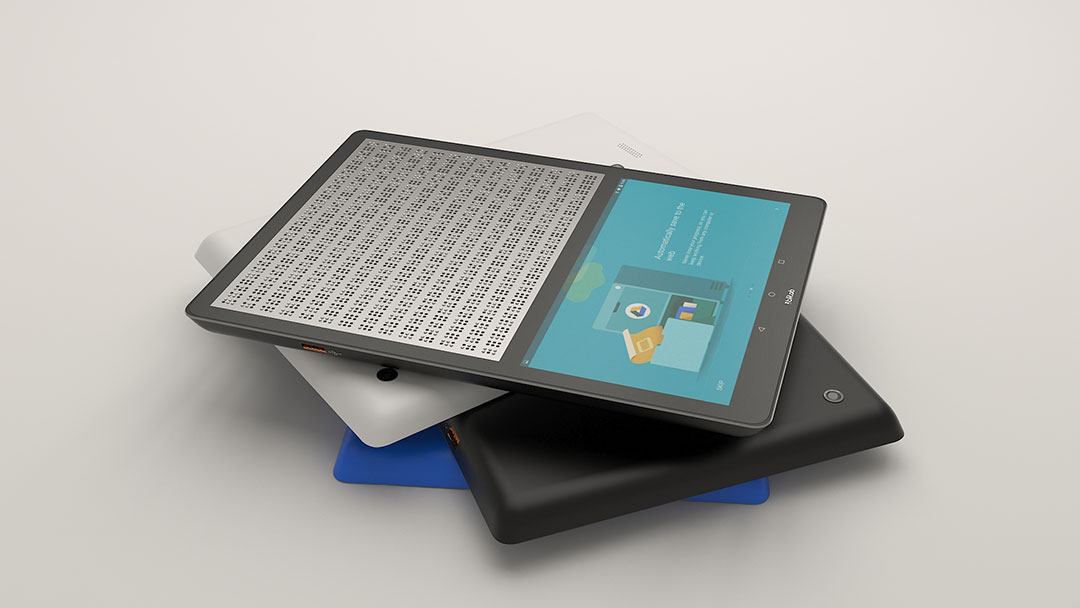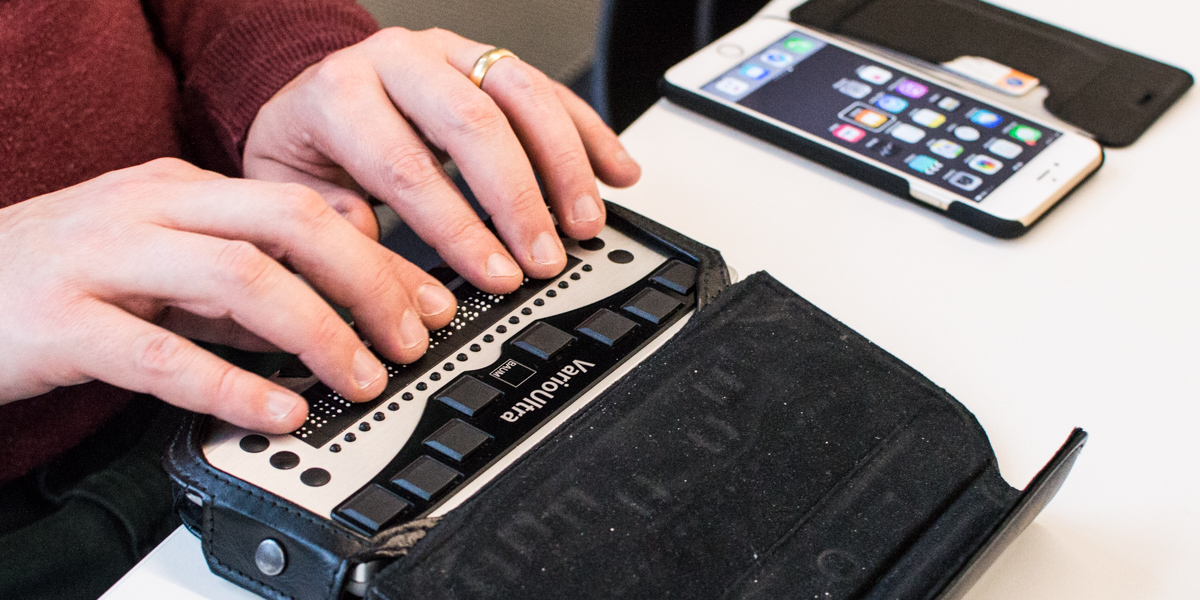Enhancing Lives With Advanced Assistive Instruments for the Blind
The combination of advanced assistive gadgets for the blind is transforming exactly how individuals experience their environments and connect with their neighborhoods. What does this development mean for the future of assistive technology and its duty in equipping individuals?
Overview of Assistive Devices
Assistive gadgets for the blind include a varied variety of devices and innovations made to enhance self-reliance and improve the quality of life for people with visual disabilities. These gadgets satisfy numerous needs, from navigation and movement to interaction and daily job management.
One of the key categories of assistive gadgets includes movement aids, such as white walking canes and overview pets, which help customers browse their surroundings safely. Digital travel aids, outfitted with sensors and audio comments, likewise play a considerable role in movement enhancement.
Additionally, gadgets that assist with everyday living tasks, such as adaptive kitchen devices, Braille labels, and speaking watches, equip individuals to carry out tasks individually. Interaction aids, including screen viewers and Braille display screens, help with accessibility to information and enable people to engage effectively with the electronic world.
Moreover, low-tech options like multiplying glasses and large-print materials remain essential for lots of customers. Collectively, these assistive gadgets serve not only as functional tools yet likewise as essential enablers of autonomy, promoting higher involvement in a globe that commonly focuses on sighted experiences. Their integration into day-to-day live is important for promoting inclusivity and enhancing total well-being for those with visual impairments.
Cutting-edge Technologies in operation
Development in modern technology has dramatically changed the landscape of devices readily available for people with visual problems. Amongst the most significant improvements are wise glasses incorporated with enhanced reality, which supply real-time navigating aid and object recognition. These tools take advantage of progressed cams and expert system to deliver auditory cues, enhancing the customer's spatial awareness and freedom.
Additionally, mobile applications have actually become powerful sources, enabling customers to determine money, reviewed message out loud, and browse strange atmospheres via verbal directions. Devices such as Braille displays and refreshable Braille devices remain to advance, using smooth connectivity with smartphones and computers, thus enhancing interaction and access to details.
Wearable innovation, consisting of smartwatches furnished with voice-activated attributes, even more equips users by helping with quick accessibility to alerts and alerts without calling for aesthetic interaction. Responsive maps and 3D printing are additionally acquiring grip, supplying tangible representations of areas that help in alignment and mobility training.
Jointly, these cutting-edge modern technologies not only enhance the day-to-day lives of aesthetically damaged people yet likewise foster higher freedom, inclusivity, and engagement with the broader community, consequently improving perceptions of accessibility. (OCR devices for the blind)
Individual Stories of Empowerment
Empowerment frequently emerges from personal experiences that highlight the transformative impact of innovation on people with visual disabilities. Take, for instance, the story of Sarah, a young musician that reclaimed her interest for paint through the usage of a clever cane outfitted with barrier detection. This device not just facilitated her flexibility but instilled a newly found confidence, enabling her to navigate public rooms independently and seek Clicking Here her creative undertakings.

These stories emphasize the extensive impacts that advanced assistive tools can carry day-to-day live. By allowing people to conquer obstacles, modern technology promotes a feeling of autonomy and self-worth. Such empowerment tales act as a testament to the capacity of innovation, illustrating how the right tools can dramatically boost lifestyle and open doors additional hints to brand-new opportunities for those with aesthetic impairments.
Advantages of Advanced Solutions
The integration of sophisticated modern technology into assistive tools significantly changes daily experiences for those influenced by vision loss. Smart glasses for the visually impaired. Instruments such as wise walking sticks furnished with sensing units, navigating apps, and wearable innovation are developed to supply real-time feedback, improving spatial understanding and reducing the dangers connected with movement.
In addition, advanced assistive innovations cultivate social inclusion by helping with interaction and communication. Voice-activated gadgets and apps allow people to accessibility information and engage with their environments separately, breaking obstacles that formerly hindered their participation in instructional, specialist, and social settings.
Additionally, the customization and versatility of these remedies deal with the varied requirements of users, therefore boosting their overall lifestyle. Improved capability, such as object acknowledgment and text-to-speech capabilities, empowers people with aesthetic disabilities to do tasks that they might have as soon as found testing. Ultimately, progressed assistive modern technologies not just enhance independence and safety and security yet additionally advertise self-respect and self-regard, allowing users to lead satisfying lives.
Future Fads in Assistive Technology
As technology dig this remains to progress, the landscape of assistive gadgets for the blind is positioned for remarkable innovations that will certainly better improve accessibility and self-reliance. Arising trends in assistive modern technology suggest a shift towards raised integration of expert system (AI) and device understanding, making it possible for gadgets to adapt to specific user requires in real-time. These technologies are anticipated to assist in even more intuitive navigating systems that can recognize challenges and provide audio comments, substantially enhancing outside wheelchair.
Furthermore, the development of wearable technology, such as smart glasses equipped with augmented truth, will certainly allow individuals to get contextual details concerning their environments, thus enhancing their spatial recognition. Developments in haptic technology assurance to produce responsive comments tools, permitting individuals to perceive information through touch, improving knowing and communication with their setting.
Telecommunication advances are likewise leading the method for remote support services, where skilled experts can provide support via video calls, making sure support is easily obtainable. As these fads unravel, the future of assistive devices for the blind will most certainly promote higher freedom, encouraging people to browse their globe with self-confidence and convenience.

Final Thought
The combination of sophisticated assistive tools for the blind represents a significant improvement in cultivating self-reliance and improving quality of life. By making use of cutting-edge innovations, these tools empower individuals to browse their environments with higher confidence and freedom. As the field proceeds to evolve, continuous r & d will likely produce a lot more advanced options, even more changing the lived experiences of individuals with visual impairments and promoting a greater feeling of addition within culture.
The integration of advanced assistive tools for the blind is changing just how individuals experience their environments and engage with their areas. The combination of innovative innovation into assistive gadgets considerably transforms day-to-day experiences for those influenced by vision loss.As technology continues to advance, the landscape of assistive gadgets for the blind is poised for exceptional improvements that will certainly even more improve ease of access and self-reliance. Emerging trends in assistive innovation suggest a shift toward raised combination of synthetic knowledge (AI) and machine discovering, enabling tools to adjust to specific user requires in real-time.The integration of advanced assistive tools for the blind represents a substantial innovation in cultivating independence and boosting high quality of life.